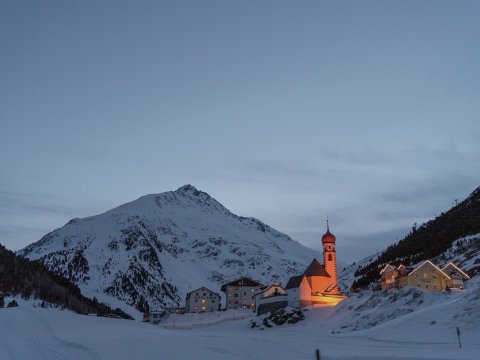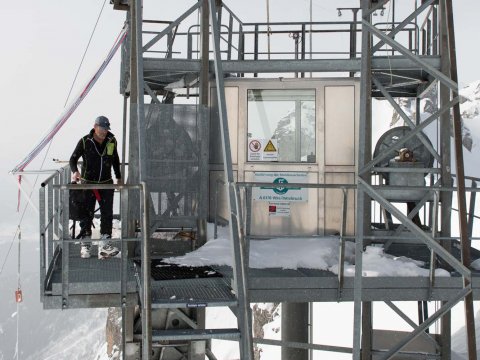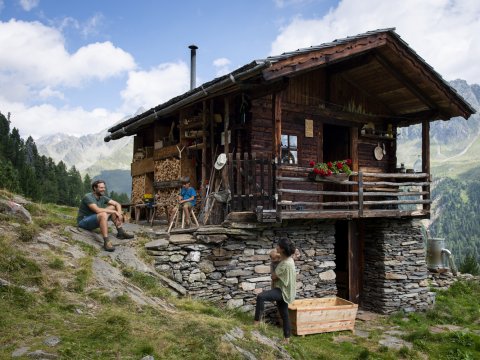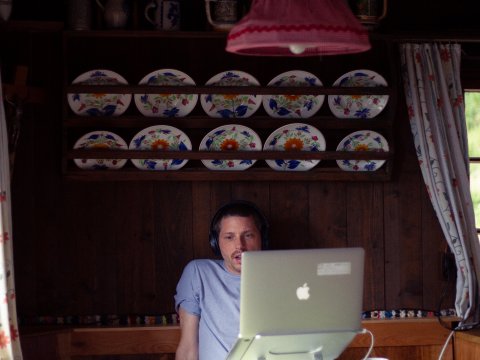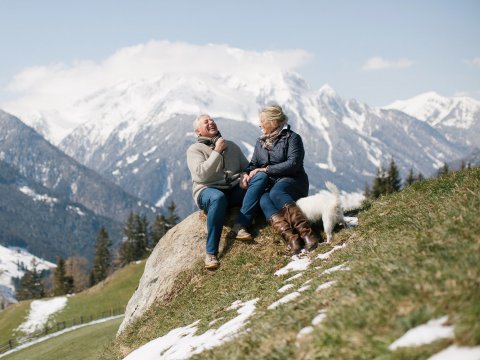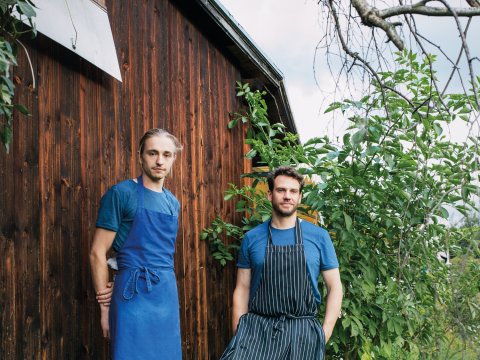The Hut by the Glacier
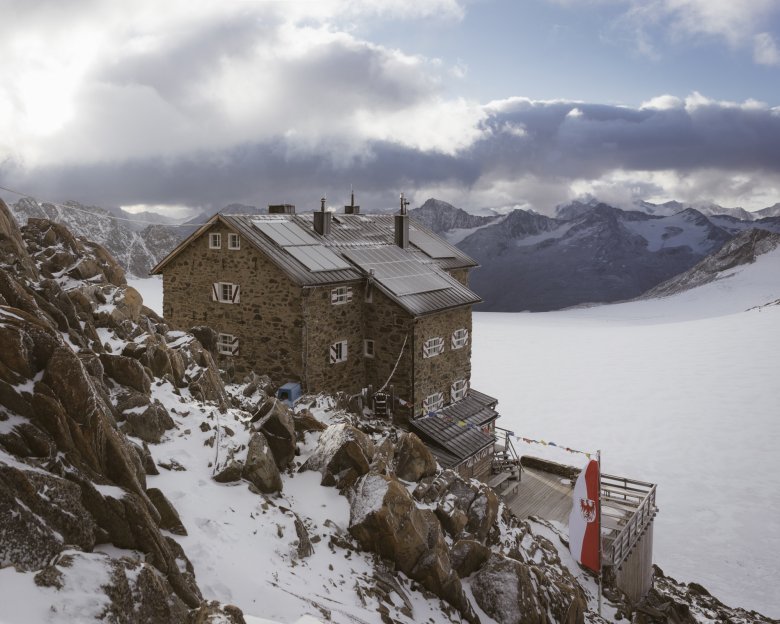
Far from civilisation, the highest huts in the Alps have always exerted a special fascination. These mountaineering basecamps are a gateway to an otherwise inaccessible world of sheer rockfaces and eternal ice. Among the most eye-catching and awe-inspiring high-mountain huts in the Austrian Alps is the Brandenburger Haus. Perched at 3,277 metres above sea level, it can be reached on foot in six to eight hours either from the Kaunertal Valley or the Ötztal Valley. The hut has been welcoming hikers and mountaineers for over 100 years and is today run by a couple from the Czech Republic living in the Pitztal Valley.
Peter Kalina leaps over the rocky steps, the beam of his headlamp briefly illuminating the large granite boulders in his path. It is three o'clock in the morning. Peter is on his way down into the valley, to the village of Vent. There, at seven o'clock in the morning, a helicopter is scheduled to fly food, beer and firewood up to the Brandenburger Haus. It is still pitch dark. As he reaches the glacier, he takes the cover off his skidoo, fires up the engine and accelerates off into the night. The snowmobile was flown up here to over 3,000 metres above sea level to shorten the two-kilometre journey he regularly makes across the glacial ice of the Kesselwandferner and to transport small items as and when needed. The single bright light at the front of the motor-powered sled glides over the frozen surfaces of the Kesselwandferner. Together with the adjacent Gepatschferner it forms the largest contiguous glacier area in Austria – eighteen square kilometres of snow and ice.
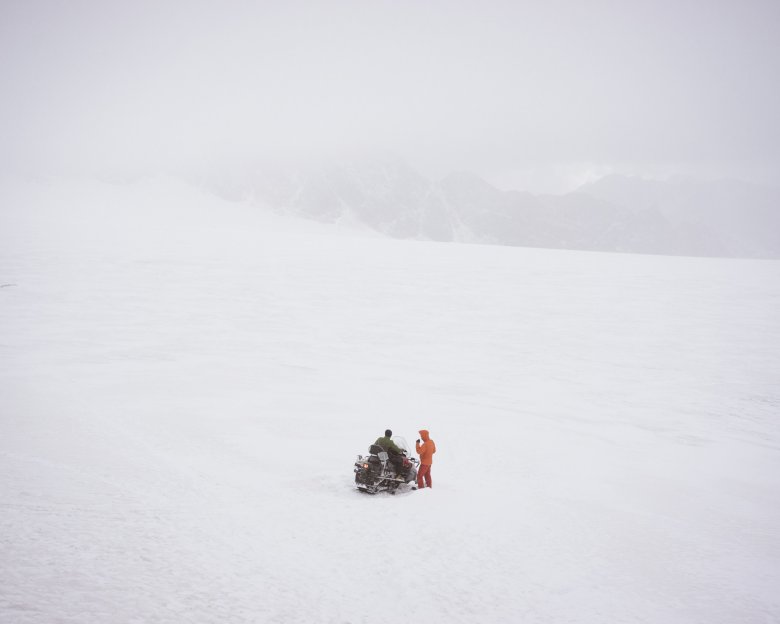
The helicopter will fly a total of four times today. Everything is timed to perfection – each minute of airtime costs more than 300 euros. Peter has to coordinate the packing of the pallets in the valley, while up at the hut his wife Katerina and her small team receive the goods and store them away. This year they will receive a total of eleven tonnes of food and beverages via helicopter.

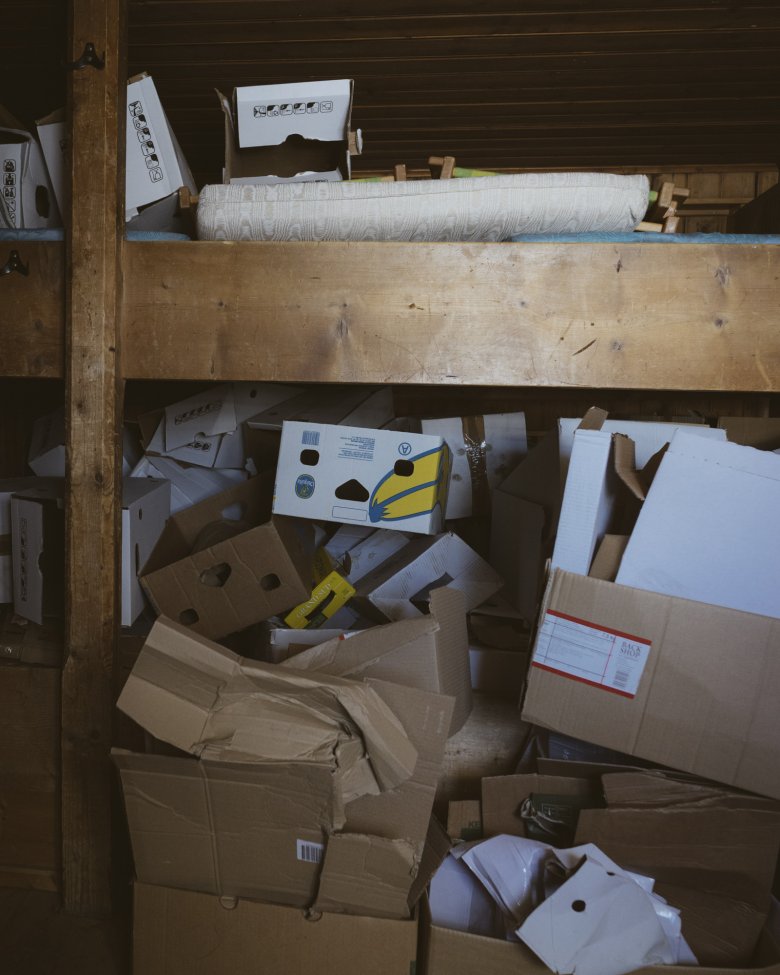
Supplying the highest huts in the Alps is still a logistical challenge even today. The only hut in Austria higher than the Brandenburger Haus is the Erzherzog-Johann-Hütte perched on the Großglockner mountain at 3,454 metres above sea level. In the whole of Austria there are just five huts above 3,000 metres. This extreme altitude means the season lasts only a few months. Such super-high huts are often a long way from any dirt road accessible by vehicle. From the Brandenburger Haus it is 10 kilometres as the crow flies to the nearest village, Vent, which takes almost six hours to reach on foot – a descent with 1,600 vertical metres of downhill walking. All paths to the hut lead over glaciers with crevasses, making knowledge of alpine terrain a must for hikers. The remote and isolated nature of the Brandenburger Haus explains why supplies have been flown up here by helicopter since the 1980s.
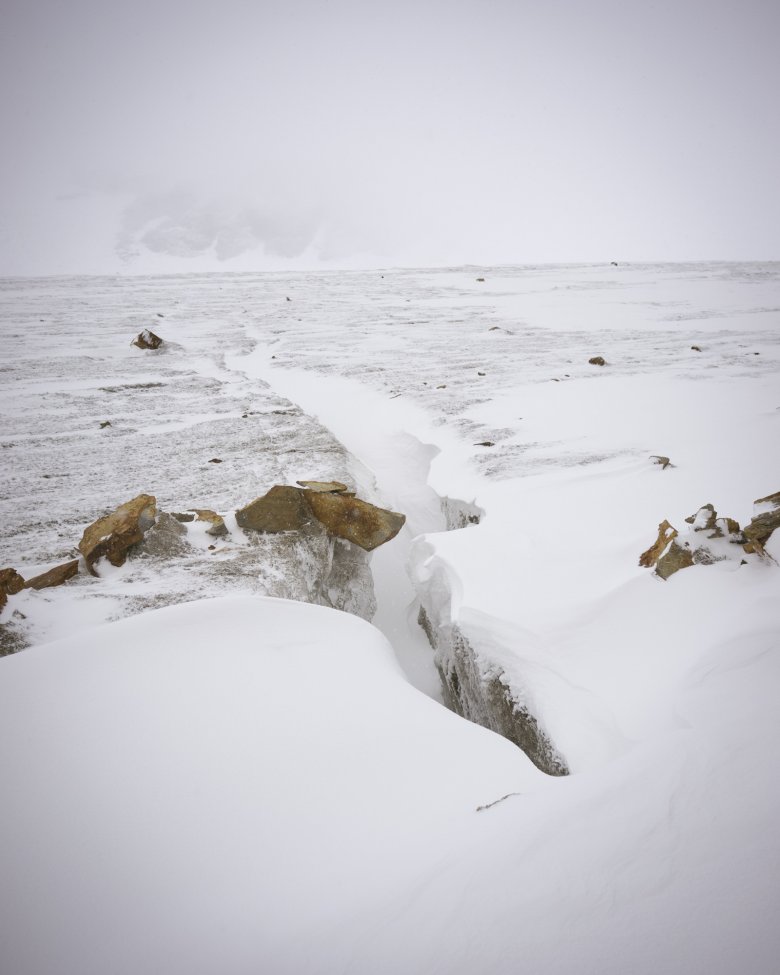
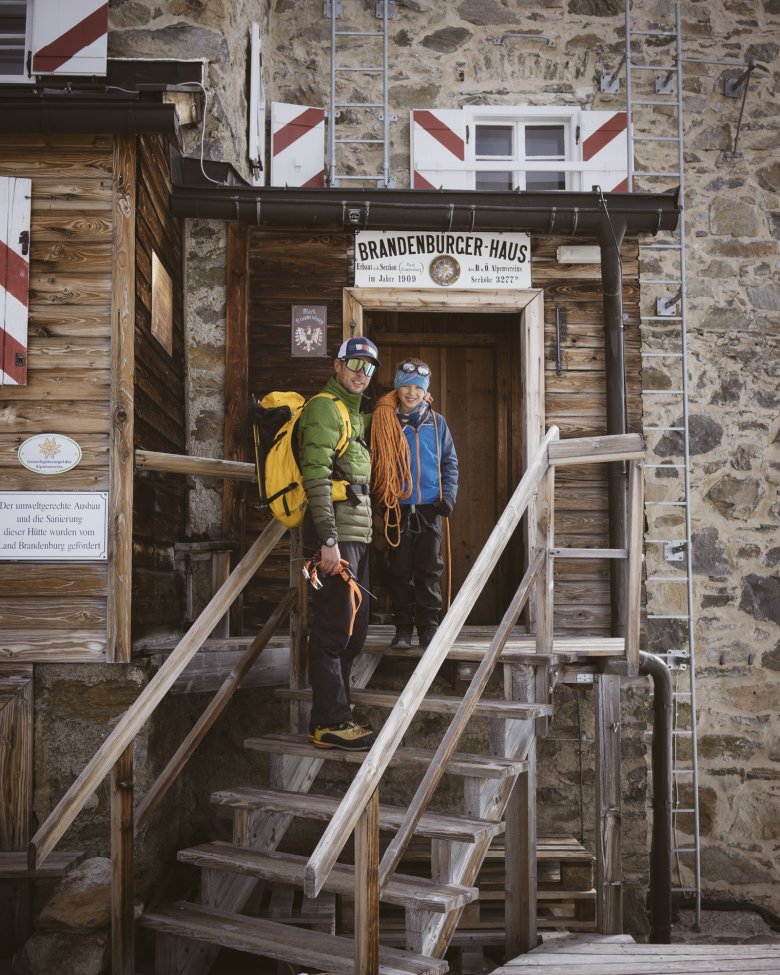
In the first morning light the pilot takes off with the first pallet towards the Brandenburger Haus. It takes the helicopter just under five minutes to fly from Vent to the hut. A net with the food pallet is attached to a 25-metre rope dangling below. The pilot has to set the pallet down precisely on the terrace of the Brandenburger Haus – a highly skilled job made harder by the altitude and the strong winds up here in the high mountains. Katerina Kalinova, who runs the hut together with her husband Peter, receives the pallet. Pavel, the cook, also lends a hand. Everyone helps carry the food into the cellar ready for the next delivery. It was in summer 2021 that the three friends from the Czech Republic – Peter, Katerina and Pavel – took over the running of this iconic hut.
Katerina and Peter met as ski instructors and moved to the Pitztal Valley together five years ago. They have a passion for the mountains. Peter proposed to Katerina on the summit of Mont Blanc. Together they have climbed Aconcagua in Argentina, a peak of almost 7,000 metres. Peter has accompanied a Czech expedition to Manaslu in the Himalayas. When they heard the Brandenburger Haus was looking for a new person to run it, it quickly became clear that this could be their dream come true.
They applied and were selected from a large field. As an engineer, Peter is technically versatile and skilled in his craft. Katarina, an experienced ski instructor, is stress-resistant and a great host. They were able to convince a mutual friend, Pavel, to come and run the kitchen. He has already cooked in a Michelin-starred restaurant in Prague, works winters in a fine-dining restaurant in glitzy Kitzbühel and, up here with a view of the glaciers, prepares, among other things, his favourite variation of "Buchteln" – a sweet treat with curd cheese in a reduced rum sauce served with sultanas and yoghurt. The beer also comes from the Czech Republic, sourced from some friends with their own brewery. Multiculturalism in the mountains? A recipe for success, as Peter, Katerina and Pavel have found out to their delight.
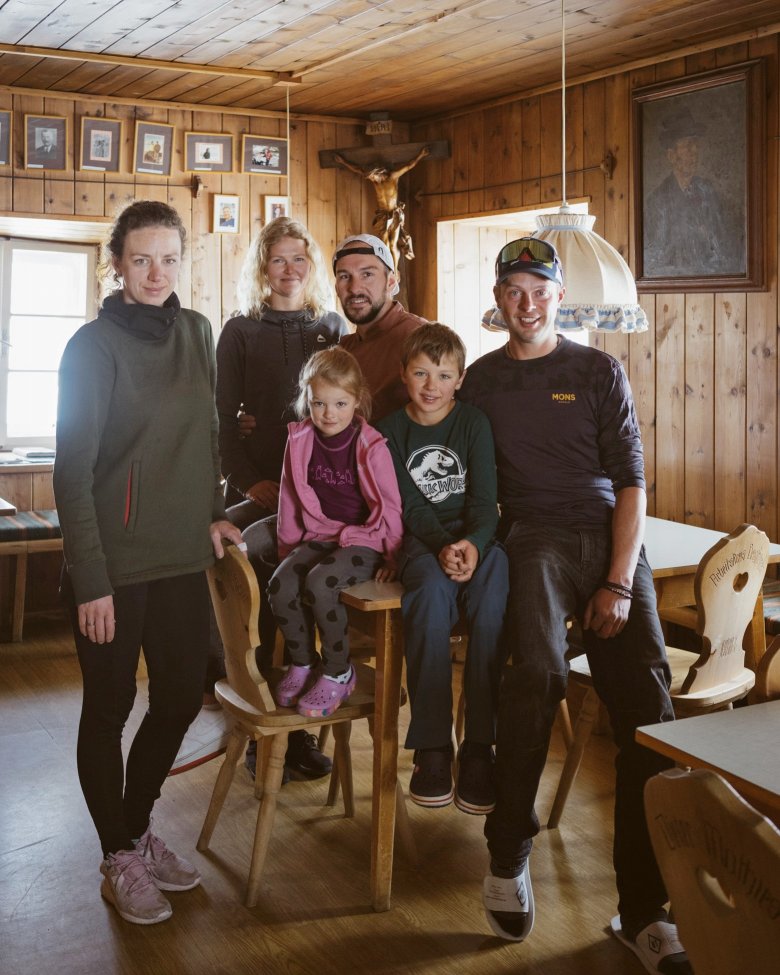
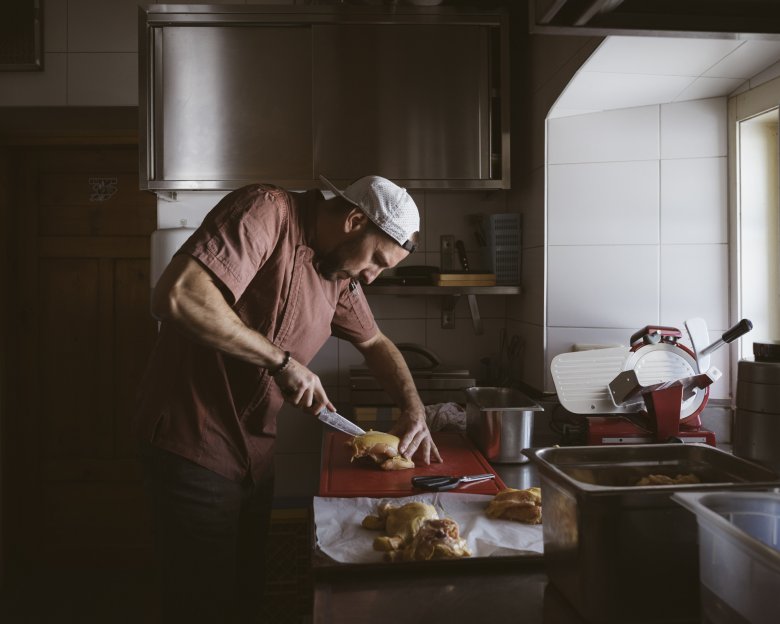
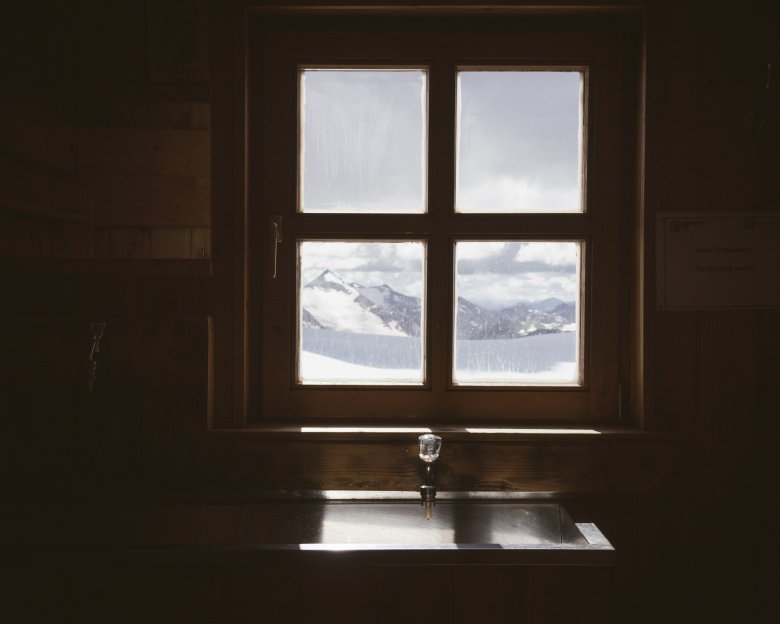
The Brandenburger Haus has developed a reputation as an international meeting place. Within the space of just a few days you can meet half of Scandinavia here – mountaineers from Denmark, Norway and Sweden – but also Dutch, Italians, Spaniards, Americans and Australians as well as Tiroleans from both North Tirol (Austria) and South Tirol (Italy). They come to the hut via a wide variety of routes, be it from the Kaunertal or Ötztal Valleys or much further from the Pitztal Valley or even the South Tirolean valleys of Langtauferertal or Schnalstal. All are blown away by the location. "It's unbelievable how remote the hut is," marvels one of the guests, a mountain-loving professor of artificial intelligence from Portland, Oregon, looking towards the summit of the Weißseespitze.
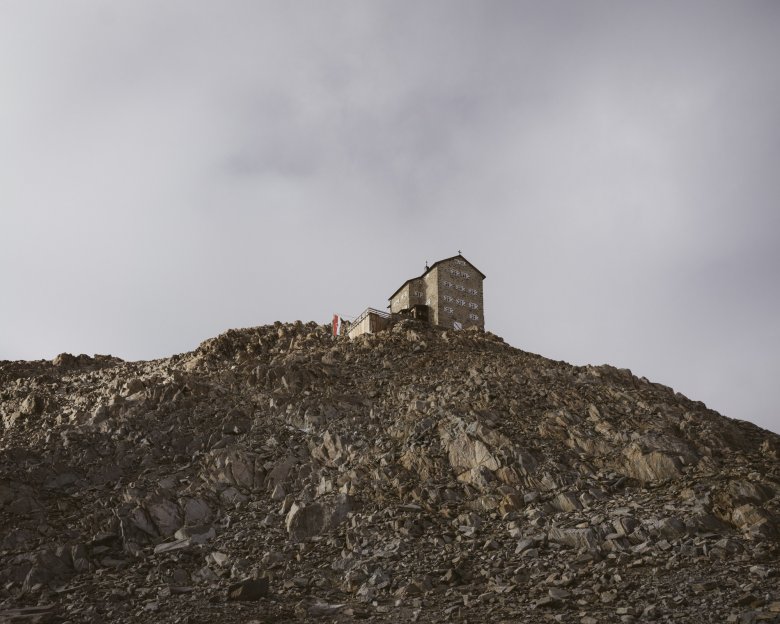
The fascination the hut exerts on visitors remains unbroken. The location is truly spectacular. The idea of building a hut in this most inhospitable of environments was first developed by Emil Pott, a Munich-based professor of zootechnics and a passionate mountaineer in his spare time. In an essay for the German Alpine Club in 1903 he wrote that from a possible hut on the ridge of the Kesselwandferner glacier some excellent "ice peaks" and "great glacier hikes" were possible "without having to exert oneself".
The problem, however, was that at the time there was no experience with building projects of this dimension at such high altitudes. The fact that the three-storey granite building was built is mainly thanks to the commitment of the members of the Brandenburg Division of the German Alpine Club. In Brandenburg, more than 700 kilometres away from the site where the hut was to be built, a committee of experts was formed which spent years planning the project and its financing. Construction work was only ever possible for a few weeks in high summer because of the altitude. Even today, a rusty stone crusher bears witness to the hard work of shaping the granite blocks into building material. In the ice of the Kesselwandferner you can still find the remains of the wooden beams of the first roof beam, torn away by a storm while the hut was still under construction. After five long years of work, the Brandenburger Haus was finished. From now on it would be one of the highest huts in the Eastern Alps.
The completion of what had seemed an impossible project was greeted with much amazement. Following the opening of the hut in 1909, a Berlin newspaper ran the headline: "A hotel at 3,300 metres". And indeed, the level of comfort on offer was remarkable. Martin Frey, a local historian from the Kaunertal Valley, has found old documents with details of what awaited guests at the Brandenburger Haus: "Gaslighting in the heated rooms, a restaurant with a good dozen starters and main courses, a cellar with exquisite wines, a darkroom for the immediate development of mountain photographs." And in the bedrooms there were mattresses supplied by the renowned mattress maker Steiner.
Even if the pretensions of the early days have now given way to a certain pragmatism, it is still astonishing to see the effort and technology needed to run a hut at this altitude. The drinking water comes from springs above the hut and is fed from the snowfields on the Dahmannspitze mountain. A filter system removes sediments and any germs are killed using ultraviolet light.
Peter regularly inspects the springs, looks for new alternatives and lays the pipes through the rocky terrain towards the house. He also tests the quality of the water. Without the springs, the hut could run. This system provided 70 cubic metres of drinking water in 2021, plus 40 cubic metres for the toilets and washing facilities.
And that's despite the fact that there are no showers at the hut in order to keep water consumption to a minimum. With almost 2,000 overnight stays over two and a half to three summer months, demand is often close to the limit of what is possible. Peter always calculates how long his water supplies will last in case the spring should dry up – which, fortunately, has not happened yet.
Up here at over 3,000 metres the season is short. The hut usually opens in mid-June and stays open until the first snows in September. Solar panels on the roof generate electricity – another thing for Peter to inspect and maintain. It's a spectacular place to work when he's balancing on ropes across the roof. And if it snows in summer – which does happen from time to time – he immediately clears the panels of snow so they can generate energy again as quickly as possible. The house is heated with wood and briquettes, though heating is limited to the two guest rooms, the kitchen and the winter room. That alone requires 4.5 tonnes of heating material. All flown up by helicopter.

Running the house requires Katerina and Peter to work practically around the clock. But when they talk about their new life in the mountains, their eyes light up. They hope that their first season will be followed by several more years at the Brandenburger Haus.
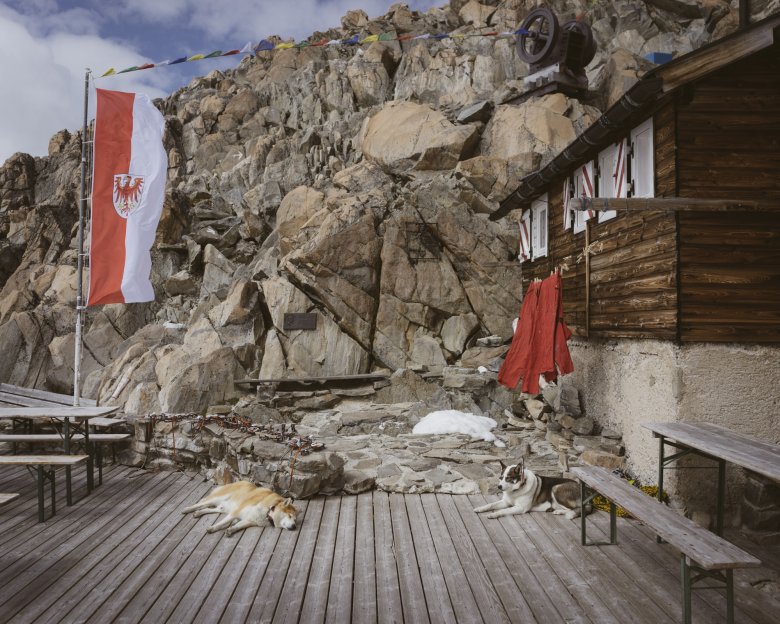
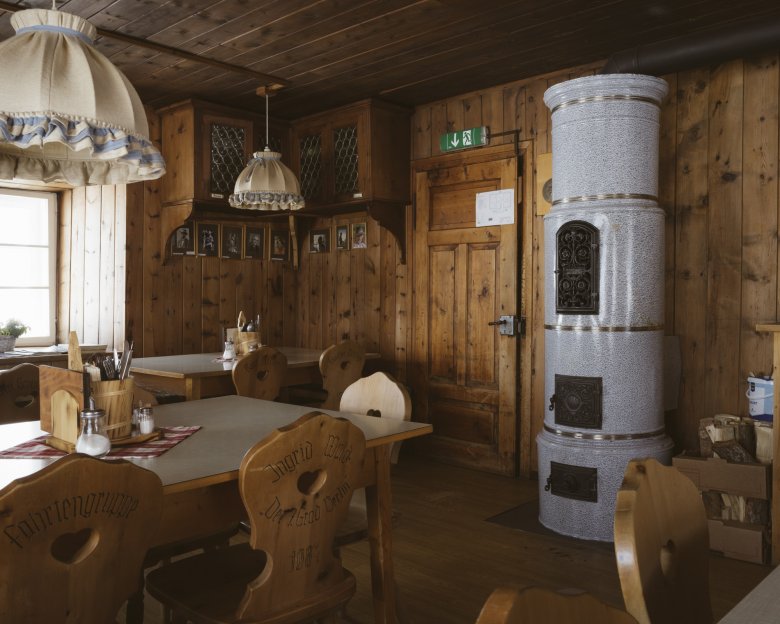
And on those rare occasions when they do have an hour or two to themselves, they like to pull on their hiking boots and walk up onto the Dahmannspitze, the mountain right behind the hut. It only takes half an hour to get to the top. The mountain is named after the architect of the Brandenburger Haus, Richard Dahmann. It is a very beautiful and wonderfully easy-to-climb 3,000-metre peak – a summit that can be conquered before breakfast, if you fancy. Just one of the many advantages of living in a hut perched at 3,277 metres above sea level.










